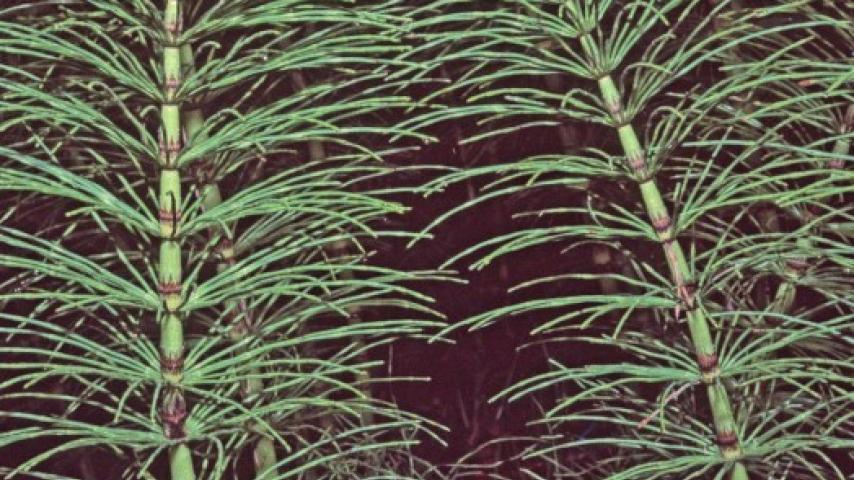Common Horsetail (Equisetum arvense)
Our familiar horsetails are relatively primitive plants, first detected in the fossil record in the Carboniferous period (>300 million years ago), when they were trees (of the genus Calamites) reaching more than 30 m in height.

KINGDOM Plantae - PHYLUM Pteridophyta - CLASS Equisetopsida - ORDER Equisetales - FAMILY Equisetaceae
Horsetails still show a hollow stem with ribbing on the outside, like their arborescent ancestors. Because of the structure of the spores of both groups, as well as recent studies of their DNA, horsetails and ferns are believed to be each other’s closest relative.
The Common Horsetail is a worldwide plant of the northern hemisphere, the stems growing as high as 60 cm each summer before dying back. It is easily recognized by the whorls of slender filaments growing around a jointed green stem. Although they don't really look like the tails of horses, this arrangement is the source of the common name, and Equisetum means “horse bristle.” During the winter, the plants remain as rhizomes under the soil, then sprout again the next spring.
Species of Equisetum come in two types, with and without branches. The true horsetails are branched, the frilly whorls around the plant actually consisting of branches of the large stem. The leaves are vestigial, represented by scales at each of the joints. The scouring rushes are similar but lack the lateral branches. Both types have silica deposits in the stems, which make them abrasive. Scouring rushes have been much used by humans, for example to clean pans after cooking.
The young shoots of horsetails are cooked and eaten in some cultures, including some Native Americans of the Pacific Northwest. This species is also used medicinally, being rich in minerals. On the negative side, it is a very successful plant, growing in a wide variety of moist environments including highly disturbed sites, and can be an invasive weed. Very few herbivores can eat it, perhaps because of the silica deposits in the stems, and it is resistant to most herbicides. Horsetails have been a success story for a long time.
The fertile stems appear early in spring, are brown, and have prominent sheaths at the nodes. At the end of each one is a strobilus, the reproductive organ. Each strobilus is divided into multiple sporangiophores, which bear the spores. The spores are shed when elaters, ribbonlike structures to which they are attached, uncoil during dry conditions and shed them to the air. The spores that land in appropriate soil conditions germinate to form new plants.

